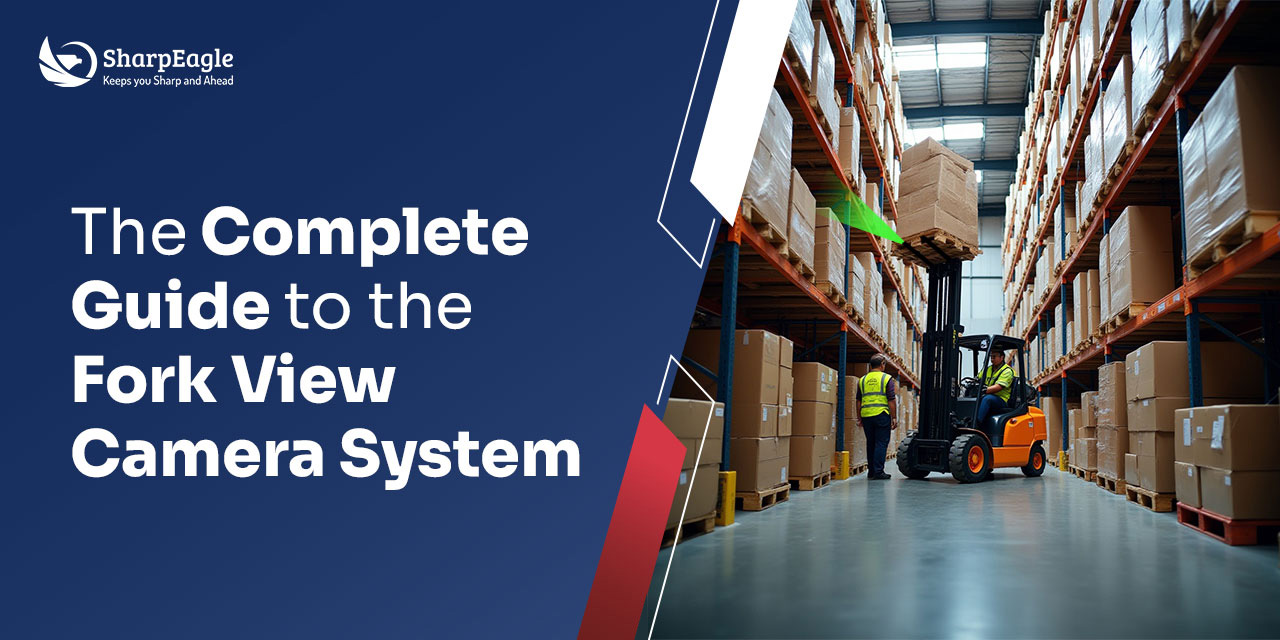

لا غنى عن الرافعات الشوكية للعمليات في مختلف الصناعات، بما في ذلك البناء والتخزين، لأنها تنقل بسهولة الأحمال الضخمة وتحسن كفاءة القوى العاملة اليدوية. تم تصميم عدة أنواع مختلفة من الرافعات الشوكية لمهام وبيئات محددة. الرافعات الشوكية الأكثر شيوعًا هي النماذج التي تعمل بالكهرباء والغاز والديزل. تعتبر الرافعات الشوكية الكهربائية مثالية للاستخدام الداخلي لأنها لا تنتج أي انبعاثات. في المقابل، تعتبر الرافعات الشوكية التي تعمل بالغاز والديزل مناسبة بشكل أفضل للاستخدام في الهواء الطلق نظرًا لمداها الطويل وقدرتها على العمل في التضاريس الوعرة.
بالإضافة إلى نوع مصدر الطاقة، تأتي الرافعات الشوكية بأحجام وقدرات رفع مختلفة. يتيح ذلك للشركات اختيار الرافعة الشوكية التي تلبي احتياجاتها على أفضل وجه، سواء كانت بحاجة إلى جمع بضع مئات من الجنيهات أو عدة أطنان.
ومع ذلك، غالبًا ما يتم تجاهل مخاطر السلامة للرافعة الشوكية. في حالة حدوث سهو، يمكن أن يؤدي حادث الرافعة الشوكية إلى إصابات وأضرار في الممتلكات وحتى وفيات، مما يجعل من الضروري إعطاء الأولوية للسلامة.
تنفيذ حلول سلامة الرافعة الشوكية أمر بالغ الأهمية لضمان سلامة العمال ومكان العمل. يمكن أن يؤدي تنفيذ ممارسات وقواعد السلامة الجيدة إلى تقليل احتمالية وقوع الحوادث بشكل كبير مع الحفاظ على عمل مكان عملك بكفاءة.
سنلقي نظرة على أهم 12 خطرًا على سلامة الرافعة الشوكية وكيفية منعها في منشور المدونة هذا. سنقدم لك اقتراحات ونصائح عملية حول كيفية التعامل مع هذه المخاطر وتجنب الحوادث.
تعتبر الرافعات الشوكية من الآلات القوية والأساسية ولكنها قد تكون خطيرة أيضًا إذا لم يتم استخدامها بشكل صحيح. فيما يلي أهم 12 خطرًا على سلامة الرافعة الشوكية:
واحدة من أكبر مخاطر السلامة هي الحاجة إلى التدريب المناسب لمشغلي الرافعات الشوكية. يجب أن يفهم المشغلون مخاطر الرافعات الشوكية وكيفية تشغيلها بأمان.
بدون الصيانة المناسبة، يمكن أن تكون الرافعات الشوكية خطرة في التشغيل. تعتبر عمليات التفتيش والصيانة المنتظمة ضرورية لضمان سلامة المشغل والآخرين حول الرافعة الشوكية.
يمكن أن يؤدي التحميل الزائد للرافعة الشوكية إلى انقلابها، مما يؤدي إلى إصابات خطيرة أو حتى وفيات. يحتاج المشغلون إلى فهم حدود الوزن وسعة الرافعات الشوكية الخاصة بهم.
يمكن أن تتسبب الرافعات الشوكية التي يتم تشغيلها بسرعة كبيرة في وقوع حوادث وإلحاق الضرر بالمشغل والآخرين.
يمكن أن تنقلب الرافعات الشوكية بشكل حاد جدًا أو تصطدم بأشياء أخرى، مما يتسبب في حدوث أضرار وإصابات.
يمكن أن تؤدي الرافعات الشوكية التي تشترك في نفس المساحة مع المشاة إلى وقوع حوادث يمكن أن تكون قاتلة. يجب أن يكون المشاة على دراية بالرافعات الشوكية وبروتوكولات السلامة المحيطة بها. يجب على المشغلين أيضًا مراقبة المشاة واستخدام إشارات التحذير عند الضرورة.
يجب أن يكون مشغلو الرافعات الشوكية على دراية بالنقاط العمياء وأن يتخذوا الاحتياطات اللازمة لتجنب الحوادث الناجمة عن نقص الرؤية. يمكن استخدام المرايا والكاميرات لزيادة الرؤية ومنع التصادمات.
يجب أن يركز مشغلو الرافعات الشوكية على القيادة وتجنب الانحرافات مثل الهواتف المحمولة أو الأجهزة الأخرى. يجب على المشغلين أيضًا تجنب الأكل أو الشرب أو التدخين أثناء تشغيل الرافعة الشوكية.
يمكن أن تسقط الأحمال غير المؤمنة بشكل صحيح من الرافعة الشوكية وتتسبب في إصابات أو أضرار. يجب على المشغلين التأكد من تأمين الأحمال بشكل صحيح قبل نقلها.
تعتبر عمليات الانقلاب سببًا شائعًا لحوادث الرافعة الشوكية ويمكن أن تحدث عندما تكون الرافعة الشوكية محملة بشكل زائد أو تعمل على أرض غير مستوية. يجب على المشغلين توخي الحذر عند العمل على المنحدرات وتجنب الحركات المفاجئة التي يمكن أن تتسبب في انقلاب الرافعة الشوكية.
تنتج الرافعات الشوكية أول أكسيد الكربون، والذي يمكن أن يكون خطيرًا عند العمل في أماكن مغلقة أو سيئة التهوية. يجب على المشغلين التأكد من أن منطقة العمل جيدة التهوية وتجنب تشغيل الرافعة الشوكية في الأماكن المغلقة لفترات طويلة.
يتطلب العمل مع الرافعات الشوكية اتصالًا واضحًا. قد يؤدي عدم التواصل إلى وقوع حوادث وإصابات. يجب على المشغلين التواصل مع العمال الآخرين عند التحميل والتفريغ واستخدام علامات التحذير حسب الحاجة.
في حين أن الوعي بمخاطر السلامة هذه أمر حيوي، إلا أن هناك طرقًا لمنعها. يمكن للمشغلين الحد من مخاطر الحوادث والإصابات من خلال اتباع قواعد السلامة الأساسية واستخدام حلول سلامة الرافعة الشوكية. في الجزء التالي، سننظر في العديد من تدابير السلامة العملية للرافعة الشوكية للمساعدة في منع الحوادث والحفاظ على سلامة العمال.
تعتبر حلول سلامة الرافعة الشوكية ضرورية لمنع الحوادث والإصابات في مكان العمل. من خلال تنفيذ بروتوكولات التدريب والصيانة والسلامة المناسبة، يمكن لأصحاب العمل إنشاء بيئة عمل آمنة لموظفيهم. فيما يلي بعض الاقتراحات لتجنب مخاطر سلامة الرافعة الشوكية:
تأكد من حصول مشغلي الرافعات الشوكية على تدريب كافٍ يغطي التشغيل الآمن وسعة التحميل وسلامة المشاة.
قم بفحص وصيانة الرافعات الشوكية بانتظام للتأكد من أنها في حالة عمل جيدة، بما في ذلك التحقق من التسربات والأجزاء البالية ومستويات السوائل المناسبة.
التزم بحدود الوزن وإرشادات السعة لمنع التحميل الزائد والتقلبات.
قم بالقيادة بأمان واتبع حدود السرعة لتجنب التصادمات والحوادث.
تقنيات الدوران: استخدم تقنيات الدوران المناسبة لمنع الانقلاب والاصطدامات.
تنفيذ بروتوكولات سلامة المشاة، مثل الممرات المخصصة، لمنع حوادث الرافعات الشوكية.
قم بتركيب الكاميرات أو استخدم المرايا لإزالة النقاط العمياء وتحسين الرؤية لمشغلي الرافعات الشوكية.
تجنب عوامل التشتيت مثل استخدام الهاتف أثناء تشغيل الرافعة الشوكية.
قم بتأمين الأحمال وتوازنها بشكل صحيح لمنع سقوط الأجسام والانقلاب.
قم بتثبيت أنظمة ثبات الرافعة الشوكية لمنع الانقلاب وتحسين السلامة.
تأكد من التهوية المناسبة ومراقبة أول أكسيد الكربون لمنع التسمم.
إنشاء بروتوكولات اتصال لضمان التواصل الواضح بين مشغلي الرافعات الشوكية والعاملين الآخرين.
من أجل عمليات الطاقم الأكثر أمانًا والمساءلة عن مخاطر السلامة، يجب أن يستثمر الموقع في حلول سلامة الرافعات الشوكية من قبل مزود موثوق. لمزيد من المساعدة في هذه الحلول في تحسين السلامة، يجب أن يفرض الموقع أيضًا استخدام معدات الحماية الشخصية (PPE) مثل القبعات الصلبة ونظارات السلامة وسدادات الأذن. يمكن أن تساعد هذه العناصر في حماية العمال من الأجسام الساقطة والمخاطر الأخرى التي قد تكون موجودة في بيئة العمل.
تعتبر سلامة الرافعة الشوكية أمرًا بالغ الأهمية في منع الحوادث والإصابات في مكان العمل. إن معرفة أهم 12 خطرًا على السلامة ووضع تدابير السلامة الصحيحة يمكن أن يقلل بشكل كبير من المخاطر المرتبطة بعمليات الرافعة الشوكية.
في SharpeEagle، نتفهم أهمية سلامة الرافعة الشوكية ونقدم حلولًا مبتكرة مثل نظام كاميرا فوركفيو و منتجات سلامة الرافعة الشوكية. يوفر برنامج كاميرا Forkview الخاص بنا مراقبة الفيديو في الوقت الفعلي وتحسين الرؤية وإزالة النقاط العمياء لمشغلي الرافعات الشوكية. بالإضافة إلى ذلك، تم تجهيز كاميرات الأمان هذه بميزات متقدمة مثل اكتشاف العوائق، والذي ينبه المشغل إلى أي أشياء في مساره، والمساعدة الاحتياطية، التي توفر التوجيه عند النسخ الاحتياطي للرافعة الشوكية. علاوة على ذلك، فإن حلول سلامة الرافعات الشوكية لدينا مثل نظام مضاد للتصادم للرافعة الشوكية ضمان بقاء الرافعات الشوكية آمنة في المناطق العمياء من خلال التنبيهات الصوتية من مسبار الموجات فوق الصوتية.
تتمتع تقنيات السلامة في مكان العمل هذه بالقدرة على الحد بشكل كبير من حوادث مكان العمل، مما يؤدي إلى زيادة الإنتاجية والربحية. تواصل مع خبرائنا في SharpeEagle اليوم لمعرفة كيف يمكن لحلولنا تحسين سلامة الرافعة الشوكية في مكان عملك.
أ: التدريب المناسب مهم لأنه يساعد المشغلين على فهم المخاطر المحتملة لتشغيل الرافعة الشوكية وكيفية تجنب الحوادث. كما يغطي التشغيل الآمن وسعة التحميل وسلامة المشاة.
أ: يجب فحص الرافعات الشوكية بانتظام، عادةً يوميًا أو قبل كل استخدام. وهذا يضمن أنها في حالة عمل جيدة، مع عدم وجود تسربات أو أجزاء تالفة أو مستويات سوائل غير مناسبة.
أ: تختلف حدود الوزن وإرشادات السعة للرافعات الشوكية وفقًا للطراز المحدد. يساعد الالتزام بهذه الإرشادات على منع التحميل الزائد والتقلبات، والتي يمكن أن تكون خطيرة.
For safer crew operations and accountability of safety hazards, the site must invest in forklift safety solutions by a reliable provider. To further aid these solutions in optimising safety, the site must also mandate the use of personal protective equipment (PPE) such as hard hats, safety glasses, and earplugs. These items can help to protect workers from falling objects and other hazards that may be present in the work environment.
Forklift safety is critical in preventing workplace accidents and injuries. Knowing the top 12 safety dangers and putting correct safety measures in place can drastically reduce the risks connected with forklift operations.
At SharpEagle, we understand the importance of forklift safety and offer innovative solutions such as the Forkview camera system and forklift safety products. Our Forkview camera program gives real-time video monitoring, improving visibility and removing blind spots for forklift operators. Additionally, these safety cameras are equipped with advanced features such as obstacle detection, which alerts the operator to any objects in their path, and backup assistance, which provides guidance when backing up the forklift. Furthermore, our forklift safety solutions like the forklift anti-collision system guarantee that forklifts stay safe in the blind zones with audio alerts from an ultrasonic probe.
These workplace safety technologies have the potential to drastically reduce workplace accidents, resulting in greater productivity and profitability. Connect with our experts at SharpEagle today to learn how our solutions can improve forklift safety in your workplace.
A: Proper training is important because it helps operators understand the potential hazards of operating a forklift and how to avoid accidents. It also covers safe operation, load capacity, and pedestrian safety.
A: Forklifts should be inspected regularly, typically daily or before each use. This ensures they are in good working condition, with no leaks, worn parts, or improper fluid levels.
A: Weight limits and capacity guidelines for forklifts vary depending on the specific model. Adhering to these guidelines helps prevent overloading and tip-overs, which can be dangerous.
A: Regular refresher training (e.g., every 2–3 years) or after any near-miss or change in forklift model helps maintain safety standards.
A: Avoid overloading, keep loads low, use slower turns, and always maintain proper load balance.
A: Yes — they improve visibility, help eliminate blind spots, and significantly reduce collision risk.
A: Use marked walkways, enforce speed limits, train both operators and pedestrians, and use warning systems (horns, lights).



